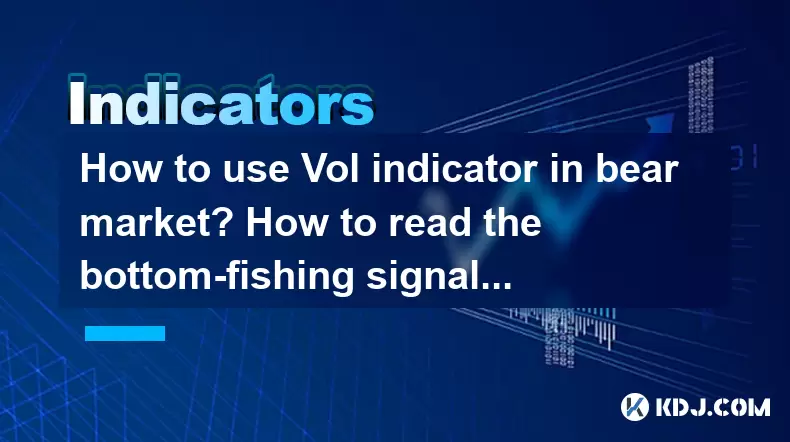-
 Bitcoin
Bitcoin $117800
0.49% -
 Ethereum
Ethereum $4432
0.55% -
 XRP
XRP $3.106
1.07% -
 Tether USDt
Tether USDt $1.001
0.01% -
 BNB
BNB $835.8
1.74% -
 Solana
Solana $189.1
2.72% -
 USDC
USDC $0.9999
-0.01% -
 Dogecoin
Dogecoin $0.2302
3.65% -
 TRON
TRON $0.3485
-0.69% -
 Cardano
Cardano $0.9212
-0.91% -
 Hyperliquid
Hyperliquid $46.97
1.45% -
 Chainlink
Chainlink $22.77
5.61% -
 Stellar
Stellar $0.4284
0.82% -
 Sui
Sui $3.766
2.82% -
 Bitcoin Cash
Bitcoin Cash $583.5
-0.82% -
 Ethena USDe
Ethena USDe $1.001
0.03% -
 Hedera
Hedera $0.2512
2.78% -
 Avalanche
Avalanche $24.18
2.27% -
 Litecoin
Litecoin $120.2
2.10% -
 Toncoin
Toncoin $3.450
1.96% -
 UNUS SED LEO
UNUS SED LEO $9.412
-0.92% -
 Shiba Inu
Shiba Inu $0.00001298
2.35% -
 Uniswap
Uniswap $10.99
3.75% -
 Polkadot
Polkadot $3.962
3.09% -
 Dai
Dai $1.000
0.00% -
 Bitget Token
Bitget Token $4.643
1.38% -
 Cronos
Cronos $0.1511
-0.08% -
 Ethena
Ethena $0.7246
3.18% -
 Monero
Monero $254.9
7.90% -
 Pepe
Pepe $0.00001100
3.32%
How to use Vol indicator in bear market? How to read the bottom-fishing signal?
In a bear market, use the Vol indicator to spot bottom-fishing opportunities by looking for high volume at lows, volume divergence, and volume spikes signaling potential reversals.
May 22, 2025 at 10:36 am

The Volume (Vol) indicator is a crucial tool for traders, especially in a bear market where identifying potential bottom-fishing opportunities can be challenging. This article will guide you through the effective use of the Vol indicator during bearish conditions and help you read the signals that indicate it might be time to start bottom-fishing.
Understanding the Vol Indicator
The Vol indicator represents the number of shares or contracts traded in a security or an entire market during a given period. It is a reflection of the market's activity level and can provide insights into the strength or weakness of price movements. In a bear market, where prices are generally declining, the Vol indicator can help you identify periods of significant selling pressure and potential reversals.
Importance of Vol Indicator in a Bear Market
In a bear market, the Vol indicator becomes particularly important because it can signal when the market might be reaching a bottom. High volume during price declines suggests strong selling pressure, while a sudden increase in volume at a price low could indicate that the selling is exhausting, and a reversal might be imminent. Conversely, low volume during price declines might suggest a lack of conviction in the downward move, potentially signaling a weaker bear market.
Identifying Bottom-Fishing Opportunities with Vol Indicator
Bottom-fishing refers to buying assets at their lowest prices, often during a bear market, in anticipation of a rebound. To effectively use the Vol indicator for bottom-fishing, you need to look for specific patterns and signals.
High Volume at Lows
When prices reach new lows on high volume, it often indicates strong selling pressure. However, if this high volume is followed by a price stabilization or a slight increase, it might suggest that the selling is exhausting. This could be a signal to start bottom-fishing, as the market might be nearing a bottom.
Volume Divergence
Volume divergence occurs when the price continues to make new lows, but the volume is decreasing. This divergence can signal that the downward momentum is weakening, and a reversal might be on the horizon. If you observe this pattern, it could be a good time to consider bottom-fishing.
Volume Spikes
A volume spike at a price low can be a significant signal. If the volume suddenly increases at a price low and the price starts to recover, it suggests that buyers are stepping in at the bottom, potentially marking the beginning of a new uptrend. This is a strong bottom-fishing signal.
Reading the Bottom-Fishing Signal with Vol Indicator
To effectively read the bottom-fishing signal using the Vol indicator, you need to combine it with other technical analysis tools. Here are some steps to follow:
- Identify the Trend: First, confirm that you are in a bear market by observing the overall trend of the market. Look for consistent downward price movements over an extended period.
- Monitor Volume at Lows: Pay close attention to the volume levels when prices reach new lows. High volume at these points can indicate strong selling pressure.
- Look for Volume Patterns: Analyze the volume patterns following the lows. A decrease in volume as prices continue to drop, or a sudden increase in volume followed by price stabilization, can be key signals.
- Combine with Other Indicators: Use other technical indicators like the Relative Strength Index (RSI) or Moving Averages to confirm the signals from the Vol indicator. For example, an oversold RSI combined with a volume divergence at a price low can be a strong bottom-fishing signal.
- Confirm with Price Action: Finally, observe the price action following the volume signals. A reversal or stabilization in price after a volume signal can confirm that it might be time to start bottom-fishing.
Practical Example of Using Vol Indicator for Bottom-Fishing
Let's consider a practical example to illustrate how to use the Vol indicator for bottom-fishing in a bear market.
- Scenario: You are observing a cryptocurrency that has been in a bear market for several months. The price has been steadily declining, and you want to identify a potential bottom-fishing opportunity.
- Step 1: You notice that the price reaches a new low, and the volume on that day is significantly higher than the average volume over the past month. This suggests strong selling pressure.
- Step 2: Over the next few days, the price stabilizes, and the volume starts to decrease. This indicates that the selling pressure might be exhausting.
- Step 3: You combine this observation with the RSI, which shows that the cryptocurrency is in an oversold condition (RSI below 30).
- Step 4: A few days later, the price experiences a slight increase on another volume spike, suggesting that buyers are stepping in at the bottom.
- Conclusion: Based on these signals, you decide to start bottom-fishing, buying the cryptocurrency at what you believe to be the bottom of the bear market.
Combining Vol Indicator with Other Tools
While the Vol indicator is powerful, it is most effective when used in conjunction with other technical analysis tools. Here are some other indicators that can complement the Vol indicator in identifying bottom-fishing opportunities:
- Relative Strength Index (RSI): The RSI measures the speed and change of price movements. An RSI below 30 indicates an oversold condition, which, combined with volume signals, can strengthen the case for bottom-fishing.
- Moving Averages: Moving averages can help you identify the overall trend and potential reversal points. A price crossing above a long-term moving average after a volume signal can confirm a bottom-fishing opportunity.
- MACD (Moving Average Convergence Divergence): The MACD can help you identify changes in momentum. A bullish crossover of the MACD line above the signal line, combined with volume signals, can be a strong indicator of a potential reversal.
Frequently Asked Questions
Q1: Can the Vol indicator be used in isolation for bottom-fishing in a bear market?
A1: While the Vol indicator can provide valuable insights into market activity, it is generally more effective when used in conjunction with other technical analysis tools. Relying solely on the Vol indicator might lead to false signals, so it's important to combine it with other indicators like RSI, Moving Averages, and MACD for a more comprehensive analysis.
Q2: How can I differentiate between a genuine bottom-fishing opportunity and a false signal using the Vol indicator?
A2: Differentiating between genuine and false signals requires careful analysis of multiple factors. Look for consistent patterns, such as volume divergence or volume spikes followed by price stabilization. Additionally, confirm these signals with other indicators like RSI and Moving Averages. A false signal might not show the same level of confirmation across multiple indicators.
Q3: Is it possible to use the Vol indicator for bottom-fishing in other financial markets besides cryptocurrencies?
A3: Yes, the Vol indicator can be used for bottom-fishing in other financial markets such as stocks, forex, and commodities. The principles remain the same: look for volume patterns and combine them with other technical indicators to identify potential bottom-fishing opportunities. However, each market may have its own nuances, so it's important to adapt your analysis accordingly.
Q4: How frequently should I monitor the Vol indicator during a bear market to identify bottom-fishing opportunities?
A4: The frequency of monitoring the Vol indicator depends on your trading strategy and time frame. For short-term traders, daily monitoring might be necessary to catch quick bottom-fishing opportunities. For long-term investors, weekly or even monthly monitoring might be sufficient. It's important to stay consistent with your chosen time frame and adapt as needed based on market conditions.
Disclaimer:info@kdj.com
The information provided is not trading advice. kdj.com does not assume any responsibility for any investments made based on the information provided in this article. Cryptocurrencies are highly volatile and it is highly recommended that you invest with caution after thorough research!
If you believe that the content used on this website infringes your copyright, please contact us immediately (info@kdj.com) and we will delete it promptly.
- Kazakhstan's Crypto Leap: Bitcoin ETF and Central Asia's Digital Finance Future
- 2025-08-13 12:45:19
- BlockDAG Presale Blazes Past $371M: Fundraising Frenzy Fuels Crypto Sensation
- 2025-08-13 13:05:21
- Meme Coins: Chasing the 2025 Surge – Which Will Moonshot?
- 2025-08-13 10:25:23
- Bitcoin's Wild Ride: Rally, Pullback, and What's Next
- 2025-08-13 10:25:23
- Bitcoin, Bitmax, and Institutional Demand: A New Era of Crypto Investment
- 2025-08-13 10:45:12
- Solana, ROAM, and Airdrops: What's the Buzz in 2025?
- 2025-08-13 11:35:13
Related knowledge

What does it mean when the +DI and -DI cross frequently in the DMI indicator but the ADX is flattening?
Aug 11,2025 at 03:15am
Understanding the DMI Indicator ComponentsThe Directional Movement Index (DMI) is a technical analysis tool composed of three lines: the +DI (Positive...

What does the sudden appearance of a "dark cloud cover" candlestick pattern during an uptrend indicate?
Aug 13,2025 at 11:35am
Understanding the 'Dark Cloud Cover' Candlestick PatternThe dark cloud cover is a bearish reversal pattern in technical analysis that typically appear...

What does it mean when the moving average, MACD, and RSI all send buy signals simultaneously?
Aug 11,2025 at 01:42pm
Understanding the Convergence of Technical IndicatorsWhen the moving average, MACD, and RSI all generate buy signals at the same time, traders interpr...

What does it mean when both the KDJ indicator and the RSI show overbought signals simultaneously?
Aug 13,2025 at 11:35am
Understanding the KDJ Indicator in Cryptocurrency TradingThe KDJ indicator is a momentum oscillator derived from the Stochastic Oscillator, widely use...

What does it mean when the price is trading above the SAR indicator but the red dots are densely packed?
Aug 09,2025 at 11:49pm
Understanding the SAR Indicator and Its Visual SignalsThe SAR (Parabolic Stop and Reverse) indicator is a technical analysis tool used primarily to de...

What does it mean when the candlestick chart forms a "Morning Star" but trading volume is sluggish?
Aug 12,2025 at 06:28pm
Understanding the Morning Star Candlestick PatternThe Morning Star is a three-candle bullish reversal pattern commonly observed in cryptocurrency pric...

What does it mean when the +DI and -DI cross frequently in the DMI indicator but the ADX is flattening?
Aug 11,2025 at 03:15am
Understanding the DMI Indicator ComponentsThe Directional Movement Index (DMI) is a technical analysis tool composed of three lines: the +DI (Positive...

What does the sudden appearance of a "dark cloud cover" candlestick pattern during an uptrend indicate?
Aug 13,2025 at 11:35am
Understanding the 'Dark Cloud Cover' Candlestick PatternThe dark cloud cover is a bearish reversal pattern in technical analysis that typically appear...

What does it mean when the moving average, MACD, and RSI all send buy signals simultaneously?
Aug 11,2025 at 01:42pm
Understanding the Convergence of Technical IndicatorsWhen the moving average, MACD, and RSI all generate buy signals at the same time, traders interpr...

What does it mean when both the KDJ indicator and the RSI show overbought signals simultaneously?
Aug 13,2025 at 11:35am
Understanding the KDJ Indicator in Cryptocurrency TradingThe KDJ indicator is a momentum oscillator derived from the Stochastic Oscillator, widely use...

What does it mean when the price is trading above the SAR indicator but the red dots are densely packed?
Aug 09,2025 at 11:49pm
Understanding the SAR Indicator and Its Visual SignalsThe SAR (Parabolic Stop and Reverse) indicator is a technical analysis tool used primarily to de...

What does it mean when the candlestick chart forms a "Morning Star" but trading volume is sluggish?
Aug 12,2025 at 06:28pm
Understanding the Morning Star Candlestick PatternThe Morning Star is a three-candle bullish reversal pattern commonly observed in cryptocurrency pric...
See all articles

























































































